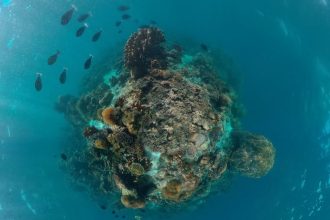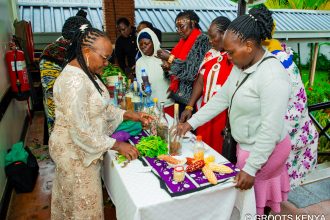By Henry Neondo
In the heart of Kenya’s Rift Valley, Maendelo Endelevu Programme (MEAP) work stands as a testament to the transformative power of community-based conservation, sustainable agriculture, and the resurgence of indigenous knowledge.
Headed by Karangathi Njoroge, an agro-ecologist, MEAP advocates for the combination of traditional agricultural practices with modern agricultural techniques, advocating for a harmonious relationship between humans, forests, and the land. MEAP’s efforts are not just about preserving the past but about navigating the present to ensure a sustainable future for both the environment and the people who depend on it.
The Intersection of Forests and Agroecology
In the context of modern agriculture, Njoroge and his colleagues use various terms such as agroecology, dynamic agriculture, and sustainable land use management to describe their efforts to balance productivity with ecological health.
“Having inherited lands that were formerly occupied by the colonialists and famously known as ‘white highlands’, our neighbours have perpetuated the kind of farming practices the white settlers used, that is mono-cropping lased with high usage of inorganic fertilizers,” said Njoroge.
For Njoroge, however, the MEAP he heads has strived over the years to introduce a new concept of farming with ecological health in mind. “These concepts go beyond theory—they are about real-world practices that address the challenges faced by farmers, particularly in the face of climate change, environmental degradation, and the erosion of traditional knowledge,” he said.
Agroforestry as Njoroge defines it, is not just a farming method but a way of life that integrates agriculture with forestry. Through agroforestry, the community is encouraged to plant trees alongside their crops. This not only restores forest cover but also creates a microclimate that benefits both crops and livestock. “The idea is to blend farming with forestry,” says Njoroge. “When you have trees on your land, you have better soil fertility, better water retention, and the plants are protected from extreme weather conditions.”

MEAP’s work emphasizes the importance of trees in farming systems. In the past, the people of this region largely depended on forests for their livelihoods. But as the pressures of urbanization, deforestation, and unsustainable farming practices have intensified, much of the indigenous knowledge and practices have faded into obscurity. Through agroforestry, Njoroge seeks to reintroduce farmers to the invaluable connection between forests and agriculture.
The forests, both public and private, play a crucial role in this balance. The public forests in the region are especially important, as they have long been under threat from illegal logging, encroachment, and over-exploitation.
MEAP collaborates with local communities to restore and manage these forests through the creation of Community Forest Associations (CFAs), which allow locals to actively participate in forest conservation and management. “Communities are the guardians of these forests,” Njoroge explains. “They know the land better than anyone else. If we give them the knowledge and the tools, they will ensure the forests thrive.”
Seed saving and reintroducing indigenous crops
A key part of MEAP’s agroecology work is the revival of traditional crops and seed-saving practices. Many of the indigenous crops once grown by the people in the Rift Valley have been displaced by hybrid varieties like maize and wheat, which were introduced during colonial times. Over the years, these crops, while more productive in the short term, have led to a loss of biodiversity and have made farmers more vulnerable to pests, diseases, and climate change.
Seed-saving is central to MEAP’s mission. Sustainable agriculture cannot thrive without access to high-quality, locally adapted seeds. “You cannot practice agroecology if you don’t have your own seeds,” Njoroge says. “Seed-saving is not just about growing food; it’s about protecting the knowledge and the culture that comes with it.”
MEAP’s work focuses on identifying, preserving, and reintroducing indigenous crops that were once abundant in the area. He has worked with local farmers to source seeds of indigenous varieties from different parts of Kenya, including Meru and Kisii, and bring them back to the region.
These crops include traditional vegetables like Terere (amaranth), Nightshed (black nightshade), and Rema (African spinach), which have been largely forgotten in favor of more commercial crops.
In addition to vegetables, MEAP has also helped introduce tubers like cassava and sweet potatoes, as well as fruit-bearing plants like bananas and sugarcane, which were not originally grown in the region. “Some children didn’t even know what cassava was,” Njoroge reflects. “Now, it’s become a normal part of the diet, and people are reaping its benefits.”
The emphasis on indigenous crops is not just about nostalgia; it’s a practical response to the challenges posed by climate change. Many indigenous crops are more drought-resistant and resilient than the hybrid varieties, meaning that they can better withstand periods of dry weather.
“When droughts come, the maize crops fail. But the indigenous crops continue to thrive,” Njoroge explains. By diversifying their crops and relying on both hybrid and indigenous varieties, farmers are able to create a more resilient farming system that is less dependent on external inputs and more in tune with the local environment.
Reimagining forest management
In addition to promoting agroecology and seed saving, MEAP is also working to address the challenges facing Kenya’s public forests. Until recently, these forests were managed primarily by government agencies such as the Kenya Forest Service (KFS). There was little input or participation from the local communities who lived near and depended on them.
“Communities living near forests were considered aliens and prohibited individuals within the forest and people risked being short for venturing into forests in search of fuelwood,” said Paul Kamau, a resident of Gitaru within the Molo sub-County.
However, the passage of the Forest Act of 2005, which was later revised in 2016, has allowed communities to take a more active role in forest conservation and management through the formation of Community Forest Associations.
The Forest Act mandates that local communities within a 5-kilometer radius of public forests can organize themselves into CFAs to co-manage the forests with the Kenya Forest Service (KFS). This co-management system ensures that the needs of the local people are taken into account while also promoting sustainable forest management practices.
MEAP has been instrumental in raising awareness about the Forest Act and helping communities form these associations. “Awareness is key,” he explains. “Many people don’t realize they have the legal right to manage their forests. We need to teach them about this law and how they can use it to protect their land.”
Once the CFAs are established, Njoroge and his team help the communities develop Forest Management Plans (FMPs). These plans are comprehensive technical documents that outline how the forest should be managed, including the types of activities that are allowed and those that are prohibited. While the FMPs require technical expertise to create, Njoroge’s team works closely with professionals and consultants to ensure that the plans reflect the needs of the community and the environment.
A key aspect of forest management under the Forest Act is the Forest Management Agreement (FMA), a legal document that formalizes the rights and responsibilities of the community in relation to the forest. Njoroge’s team helps communities navigate the negotiation process, ensuring that they understand what rights they have—such as the right to collect firewood, graze livestock, and access cultural sites—so that they can advocate for themselves during discussions with the Kenya Forest Service.
The role of livestock in agroecology
While much of MEAP’s work focuses on crops and forests, Njoroge also recognizes the important role that livestock plays in sustainable farming systems. Livestock provides manure, which is crucial for maintaining soil fertility, and their grazing helps control weeds and maintain biodiversity. In addition to cattle, farmers are encouraged to raise small animals like chickens, goats, and rabbits, which can serve as additional sources of income and nutrition.
In the past, the region relied mostly on sheep and goats for livestock, but MEAP has worked with farmers to diversify their animal husbandry practices. Today, many families raise cows, rabbits, chickens, and even bees, thanks to the fact that the area has benefitted from residents from different ethnic origins.
These animals not only provide milk, meat, and eggs but also contribute to a more balanced and integrated farming system. “If you want to succeed in agroecology, you must integrate livestock, crops, and trees,” says Kamau. “Each component supports the others, creating a more resilient and sustainable farm.”
Challenges and Hope for the Future
Despite the progress MEAP has made in restoring indigenous knowledge, promoting sustainable agriculture, and empowering local communities, the challenges are far from over. Climate change, population growth, and the encroachment of urban development continue to threaten both the environment and the livelihoods of smallholder farmers.
However, Njoroge remains optimistic. “We are on the right path,” he says. “It’s not easy, but every day we see progress. People are starting to realize that their survival depends on the health of the land and the forest. They are beginning to understand that they can’t keep taking from the land without giving something back.”
MEAP’s work is not just about the trees, the seeds, or the crops—it is about the people. Through his efforts, he is not only teaching them to preserve their environment but also helping them reconnect with their roots. “This is about reclaiming our identity as stewards of the land,” Njoroge concludes. “When we take care of the land, it will take care of us.”
MEAP’s journey in Nakuru, Kericho and Baringo Counties where they have piloted the agro-ecological farming is a powerful example of how integrating traditional knowledge with modern approaches to conservation and agriculture can create sustainable solutions to some of the world’s most pressing environmental challenges.
MEAP’s work in agroecology, seed saving, and forest management is a hopeful reminder that the future of our planet may lie in reconnecting with the practices and wisdom of the past. Through his dedication and leadership, MEAP is showing that it is possible to bridge the old and the new for a better, more sustainable future.
The voices quoted in this article are of the members of communities working with the Maendeleo Endelevu Programme (MEAP), in Kenya. MEAP is one of the partners of the African Biodiversity Network, supporting communities in building resilience to the impacts of climate change.




